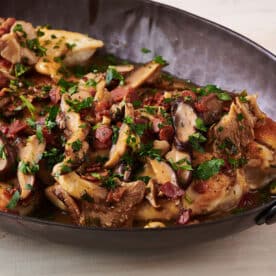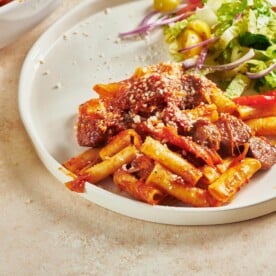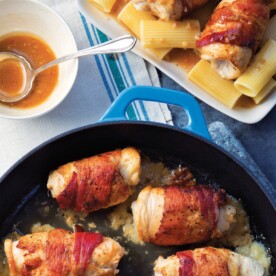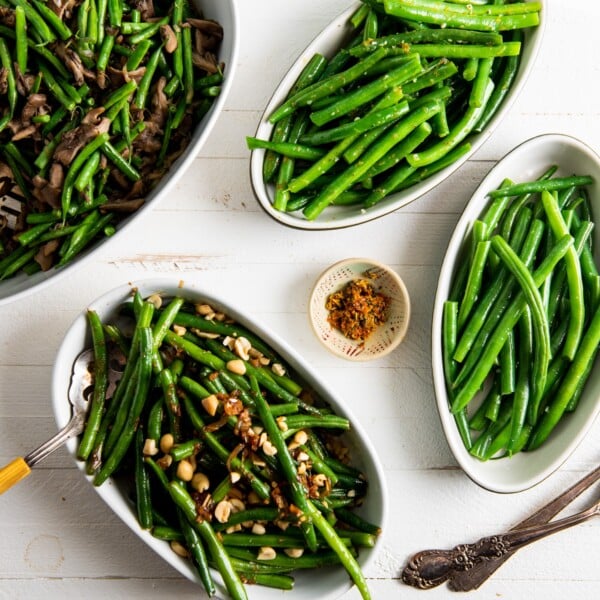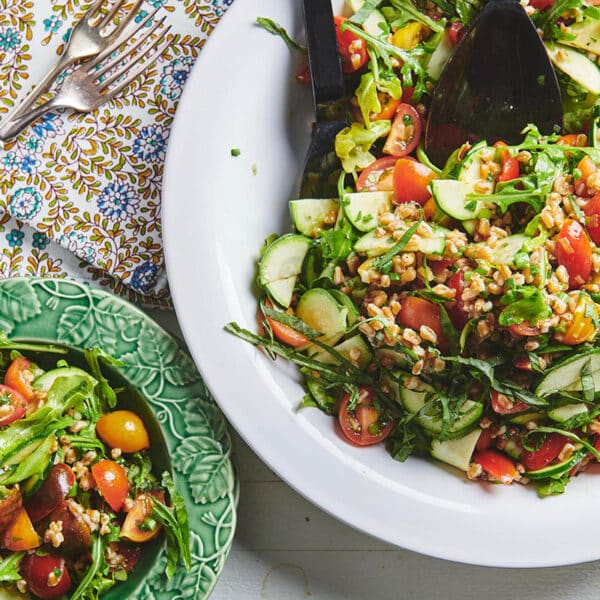What Is Marsala Wine and How to Use It in Cooking?
on Nov 13, 2025
This post may contain affiliate links. Please read our disclosure policy.

Marsala wine might sound fancy and a little mysterious, but it’s actually one of the easiest ways to add instant depth and richness to a dish. If you’ve ever had Chicken Marsala at a restaurant and experienced that silky sauce coating the savory mushrooms and tender chicken, then you’ve tasted Marsala wine.
It’s a fortified wine from Sicily that’s slightly sweet, slightly nutty, and wonderfully versatile in the kitchen. Whether you’re deglazing a pan, building a sauce, or finishing a dessert, Marsala is one of those pantry ingredients that can elevate a dish instantly.
What's In This Post?
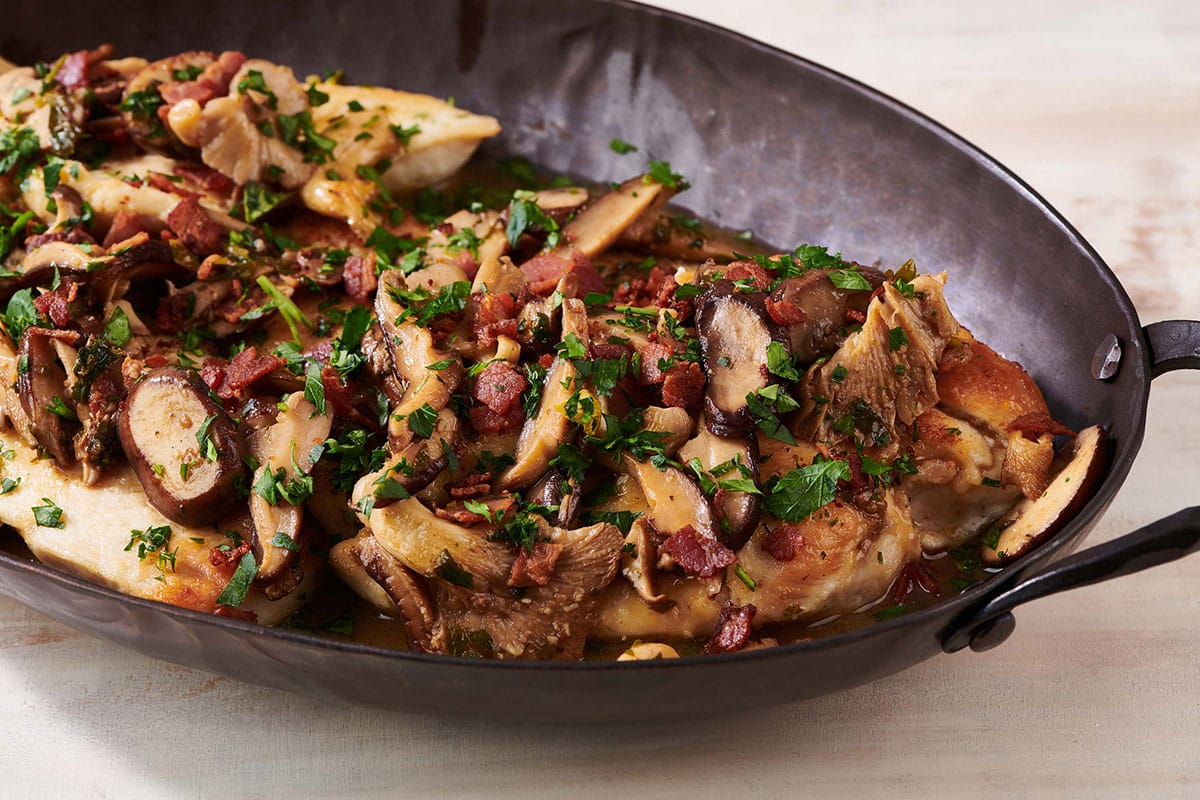
What Is Marsala Wine?
Marsala is a fortified wine (meaning alcohol — usually brandy — is added) that comes from the region around Marsala, Sicily. It’s known for its caramelized, nutty, and slightly sweet flavor, which develops as it ages. Depending on how long it’s been aged and whether it’s sweet or dry, the flavor can range from rich and syrupy to crisp and savory.
By signing up, you agree to our Privacy Policy.
Marsala is made from Sicilian white grapes, such as Grillo, Inzolia, or Catarratto, and it’s categorized by sweetness.
Marsala is classified both by sweetness (dry, semi-sweet, or sweet) and aging (fine, superiore, superiore riserva, and so on), which determine how bold and concentrated the flavor will be.
How to Use Marsala Wine in Cooking
Marsala’s charm lies in how adaptable it is. Here are some easy and classic ways to use it.
- Sauces: The most famous example is Chicken Marsala, where Marsala is reduced with butter, broth, and mushrooms into a glossy, savory sauce.
- Deglazing: Add a splash to the pan after searing meat or sautéing mushrooms to pick up those flavorful browned bits.
- Vegetables: Use dry Marsala to add depth to caramelized onions, roasted mushrooms, or even creamy vegetable soups.
- Desserts: Sweet Marsala is a classic pairing with zabagliones (used in the dish, and to sip with it), poached fruit (same), or drizzled over ice cream.
Kitchen Smarts
Dry Marsala is great for savory cooking; sweet Marsala works better for desserts.
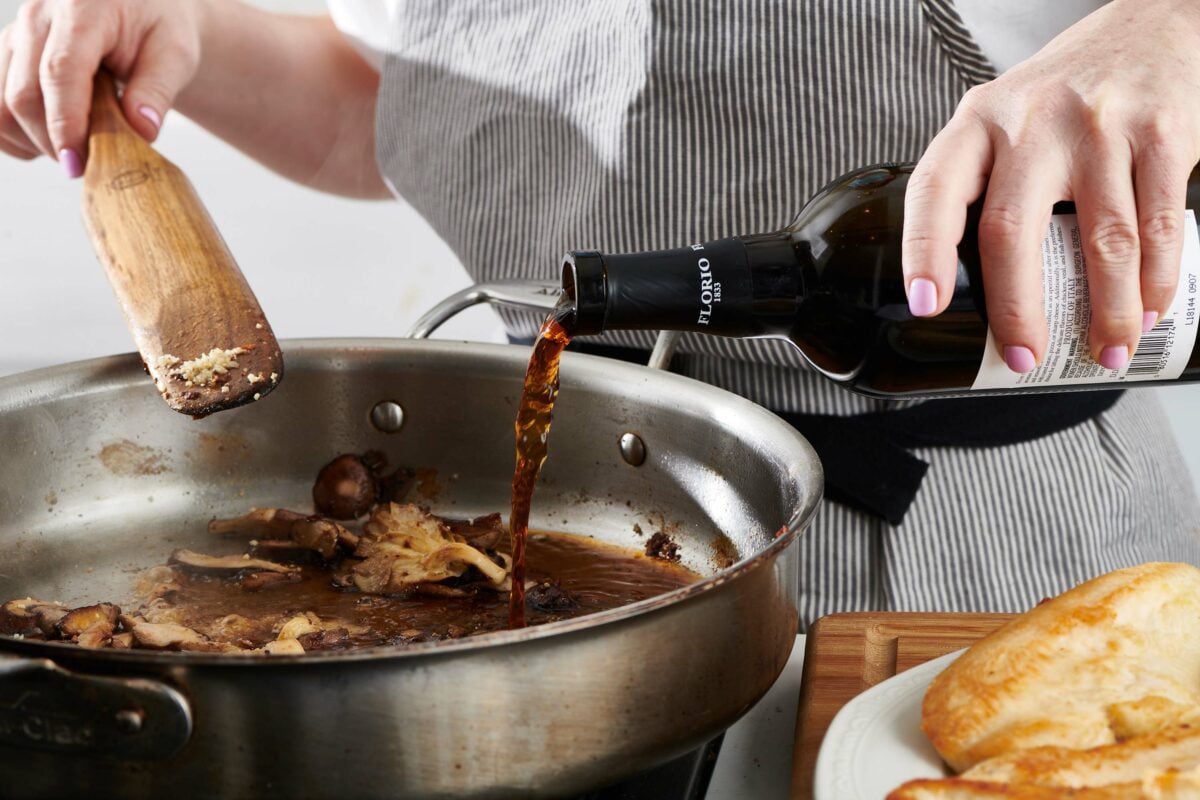
Marsala vs. Madeira – What’s the Difference?
Marsala and Madeira are often mentioned together, and while they are both fortified wines, they come from different regions and have their own personalities.
- Origin: Marsala is from Sicily, while Madeira hails from the Madeira Islands off the coast of Portugal.
- Flavor: Marsala leans toward caramel and vanilla, with a smooth, nutty sweetness. Maderia is often sharper and more tangy with flavors like toasted nuts, burnt sugar, and citrus.
How to Substitute Marsala and Madeira
If you don’t have Marsala, Madeira (look for a medium-dry version) can stand in, though the finished dish will be a little brighter and less mellow.
How to Store Marsala Wine
Because it’s fortified, Marsala has a longer shelf life than other wines. Once opened, you can keep it tightly sealed in a cool, dark place (no need to refrigerate, though it won’t hurt) for about a month, sometimes longer. It will not last for months and months, like a liquor, however, so find ways to use it up!

Is Marsala Wine Sweet or Dry?
It can be either. There is dry, semi-sweet, and sweet Marsala, all dependent on how it’s made. The sweetness depends on when the fermentation process is stopped and how much residual sugar is left over in the wine.
- Dry Marala (Secco): This version has the least amount of sugar. It’s nutty and complex, with notes of caramelized nuts, dried fruit, and vanilla. It deepens flavor without adding noticeable sweetness, and is best for savory dishes.
- Semi-Sweet Marsala (Semisecco): This is the middle ground – lightly sweet but still balanced. It’s great for recipes that benefit from a touch of sweetness, like glazes, pan sauces for pork or duck, or even roasted root vegetables.
- Sweet Marsala (Dolce): This one has the most sugar, making it rich, syrupy, and perfect for desserts. There are notes of toffee, fig, raisin, and honey.
If you’re buying just one bottle for cooking, dry Marsala is the best all-purpose choice. You can always add a little sweetness if you need to, but you can’t take it out.
FAQs
Dry Marsala is used mostly for savory recipes, such as sauces, meats, and risottos. Sweet Marsala works better in desserts and glazes. If you’re cooking dinner, start with dry; if you’re baking, reach for sweet.
Yes, Madeira is the closest match, but you can also use a combination of half white wine, half brandy. For non-alcoholic options, try a blend of grape juice and a splash of balsamic vinegar for similar sweetness and depth.
It will, but slowly. Once opened, Marsala wine lasts about 4-6 weeks if stored tightly sealed in a cool, dark place. It won’t go bad as much as it will lose its depth of flavor and aroma.
